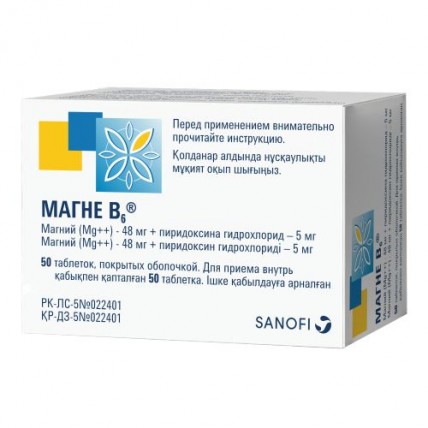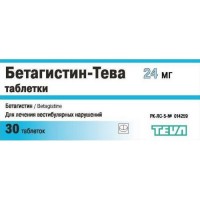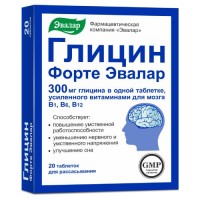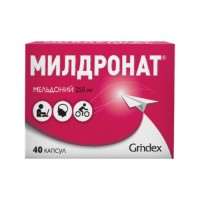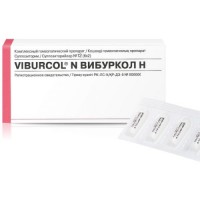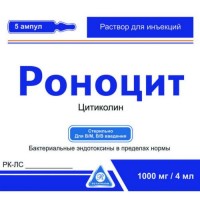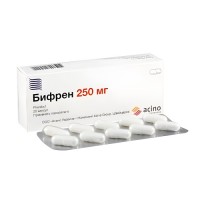Composition
One tablet contains
Magne B6 - active substances: magnesium lactate dihydrate - 470 mg (equivalent to 48 mg of magnesium), pyridoxine hydrochloride - 5 mg
Magne B6 Premium - active substances: magnesium citrate anhydrous 618.43 mg (equivalent to magnesium 100 mg), pyridoxine hydrochloride 10 mg
Pharmacological properties
Pharmacokinetics
Magnesium is present in the human body at an average concentration of 17 mmol / kg, 99% of which is intracellular magnesium. From 40 to 50% of magnesium entering the body is absorbed in the small intestine and excreted in the urine.
Vitamin B6 promotes the transport of magnesium across membranes.
About half of the volume of intracellular magnesium is contained in bone tissue, and the rest is in smooth or striated muscles, parenchymal tissues and red blood cells.
Most of the magnesium is excreted in the urine. After glomerular filtration, 70% of the magnesium present in plasma, approximately 95-97% of the magnesium is reabsorbed in the renal tubules.
Urine magnesium accounts for, on average, one third of the absorbed magnesium.
Pyridoxine is converted to the active forms pyridoxal phosphate and pyridoxamine phosphate, which are active metabolites of pyridoxine.
Pharmacodynamics
Magnesium, along with potassium, is the most important cation, which is mainly found inside cells. It is a cofactor in the functioning of a number of enzymes, for example, adenylate cyclase, phosphatases, pyrophosphatases, protein kinases, and acts as a catalyst in ATP-dependent enzymatic reactions. Magnesium inhibits the activity of ionotropic receptors and neuromuscular transmission. It is an integral component of the tissues of bones and teeth.
Magnesium deficiency increases neuronal and muscle irritability, causes tremors, ataxia, heart rhythm disturbances, and can cause tachycardia and a decrease in stress resistance.
Clinical aspects: Serum magnesium levels in the range of 12-17 mg / L (0.5-0.7 mmol / L) indicate a moderate magnesium deficiency; a magnesium content of less than 12 mg / L (0.5 mmol / L) indicates a severe magnesium deficiency. With magnesium deficiency, monitoring serum magnesium levels is only informative. It must be taken into account that magnesium is an intracellular ion, the level of serum magnesium does not adequately correlate with magnesium homeostasis in the body. A more accurate determination of the level of magnesium is obtained by monitoring the magnesium content in erythrocytes.
Magnesium deficiency can be caused by:
- primary: due to congenital anomalies of magnesium metabolism;
- secondary: due to insufficient intake of the body (for example, severe eating disorders, alcoholism, total parenteral nutrition, malabsorption, chronic diarrhea, gastrointestinal fistulas), or due to excessive loss of magnesium (for example, in chronic pyelonephritis, glomerulonephritis, polyuria in as a result of taking thiazides and loop diuretics, diuresis after kidney transplantation, diseases of the tubular apparatus, Bartter's syndrome, diabetic ketoacidosis, taking aminoglycosides, cyclosporine and cisplatin, chronic stress), due to certain hormonal disorders (hypoparathyroidism, primary hyperaldosteronism).
Other conditions that can cause magnesium deficiency include:
- hypertension, angina pectoris, myocardial infarction, arrhythmia;
- an increase in neuronal and muscle excitability (muscle spasm).
Pyridoxine is a water-soluble vitamin, which is a coenzyme of enzymes responsible for the metabolism of amino acids (reactions of decarboxylation, transamination, racemization, metabolism of sulfated and hydroxy amino acids, transformation of tryptophan - serotonin and methionine - cysteine), as well as for carbohydrate and fat-glucose 1-phosphate and linoleic acid).
Indications for use
Established magnesium deficiency, isolated or associated.
The occurrence of the following symptoms may indicate a magnesium deficiency:
- nervousness, irritability, anxiety, periodic feeling of fatigue, moderate drowsiness;
- signs of somatized anxiety in the form of gastrointestinal spasms or palpitations (without cardiac dysfunction);
- muscle cramps (e.g. calf muscle spasm), numbness
Method of administration and dosage
The tablets should be taken after meals, without chewing, with plenty of water.
Adults and adolescents over 14 years old (weighing over 50 kg): 3-4 tablets per day, divided into 2-3 doses, with meals.
Children
The tablet should not be administered to children under 6 years of age.
Children over the age of 6 years (weighing> 20 kg): 5-10 mg / kg / day, which is 1-2 tablets per day.
Treatment is carried out until symptoms of magnesium deficiency are relieved. Treatment should be discontinued as soon as blood magnesium levels return to normal. If the symptoms have not disappeared within 1 month, it is not recommended to continue taking the drug.
Side effects
- diarrhea
- abdominal pain
- skin reactions
- allergic reactions
Contraindications
- hypersensitivity to any of the components of the drug
- severe renal failure (creatinine clearance less than 30 ml / min / 1.73 m2)
- simultaneous reception with levodopa
- severe violations of the water-salt balance
Magne B6 interactions
Contraindicated combinations
- simultaneous administration with levodopa should be avoided, since the activity of levodopa is inhibited by pyridoxine. When treating with levodopa, you should avoid taking any pyridoxine-containing drugs, unless peripheral dopadecarboxylase inhibitors are simultaneously prescribed.
Combinations not recommended
- preparations based on phosphates, calcium salts, ferrous iron preparations.
These drugs inhibit the absorption of magnesium in the small intestine.
Combinations to be taken into account
- oral tetracyclines, bisphosphonates, digitalis glycosides and sodium fluoride: Magne B6® Premium should be taken at least 3 hours after taking any of these drugs, as magnesium reduces their absorption.
- during long-term therapy with potassium-sparing diuretics, tubular reabsorption of magnesium may increase, which can lead to hypermagnesemia, especially in patients with renal insufficiency.
Special instructions
COATED TABLETS SHOULD BE USED FOR ADULTS AND CHILDREN OVER 6 YEARS OLD.
- For children under 6 years of age, dosage forms are more suitable for children under 6 years of age.
- In the case of severe magnesium deficiency, treatment should be started parenterally; parenteral administration is also recommended for patients with severe malabsorption syndrome.
- In case of concomitant calcium deficiency, first of all, the magnesium deficiency should be replenished, then calcium preparations are prescribed.
- In the case of mild to moderate renal failure, the patient should be prescribed reduced doses of the drug with careful monitoring of plasma magnesium levels (to exclude the risk of developing hypermagnesemia).
- An increase in the level of magnesium affects the work of the heart, slightly lowers blood pressure, slows down the conduction of heart impulses, can weaken cardiac activity, therefore this drug can only be prescribed to digitalized patients who have previously received cardiac glycosides: for example, digoxin, with atrial fibrillation, tachycardia, with heart failure, under appropriate medical supervision (ECG, blood pressure monitoring).
- WARNING: Given that one tablet contains 50.57 mg of lactose, this drug is contraindicated in patients with rare hereditary galactose intolerance, congenital lactase deficiency or glucose-galactose malabsorption.
- The main symptom of chronic dependence on pyridoxine is sensory axonal neuropathy, which occurs mainly with the use of high doses of pyridoxine taken for a long time
period of time (several months, and in some cases - for many years), however, it can also occur when taking the drug in low doses (50-300 mg / day). Symptoms: numbness and impaired sense of body position, trembling of the distal extremities, gradually progressive sensory ataxia. As a rule, this symptomatology is stopped after the drug is discontinued.
Pregnancy and lactation
During pregnancy and lactation, daily doses should not exceed 250 mg / day for magnesium and 25 mg / day for vitamin B6. The recommended daily dose is no more than 2 tablets.
Overdose
Long-term use of the drug in high doses can cause the development of hypermagnesemia. In patients with normal renal function, an overdose of oral magnesium does not cause toxic reactions. However, in the case of kidney failure, symptoms of magnesium poisoning may develop.
Symptoms / toxic effects depending on the level of magnesium in the blood serum: drop in blood pressure, nausea, vomiting, CNS depression, decreased reflexes, ECG changes, respiratory depression, development of respiratory failure, in very rare cases - coma, respiratory paralysis, cardiac arrest, anuric syndrome.
Treatment: In the treatment of respiratory failure and heart block, slow intravenous administration of 10-20 ml of 10% calcium gluconate solution should be used. Shown are rehydration, forced diuresis. In case of renal failure, hemodialysis or peritoneal dialysis is necessary.
Storage conditions
Store at a temperature not exceeding 30 ° C.
Keep out of the reach of children!
Shelf life - 2 years
Do not use after the expiration date!
